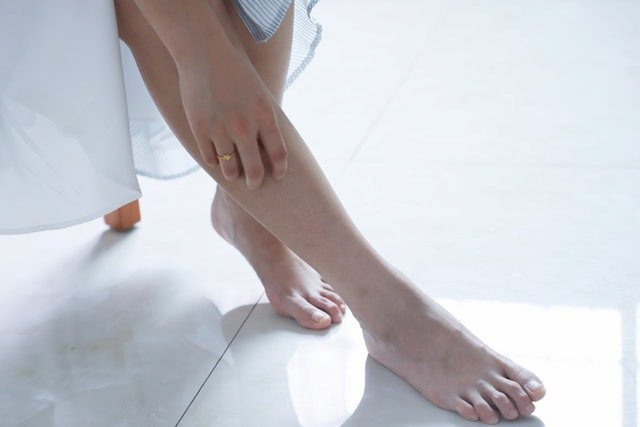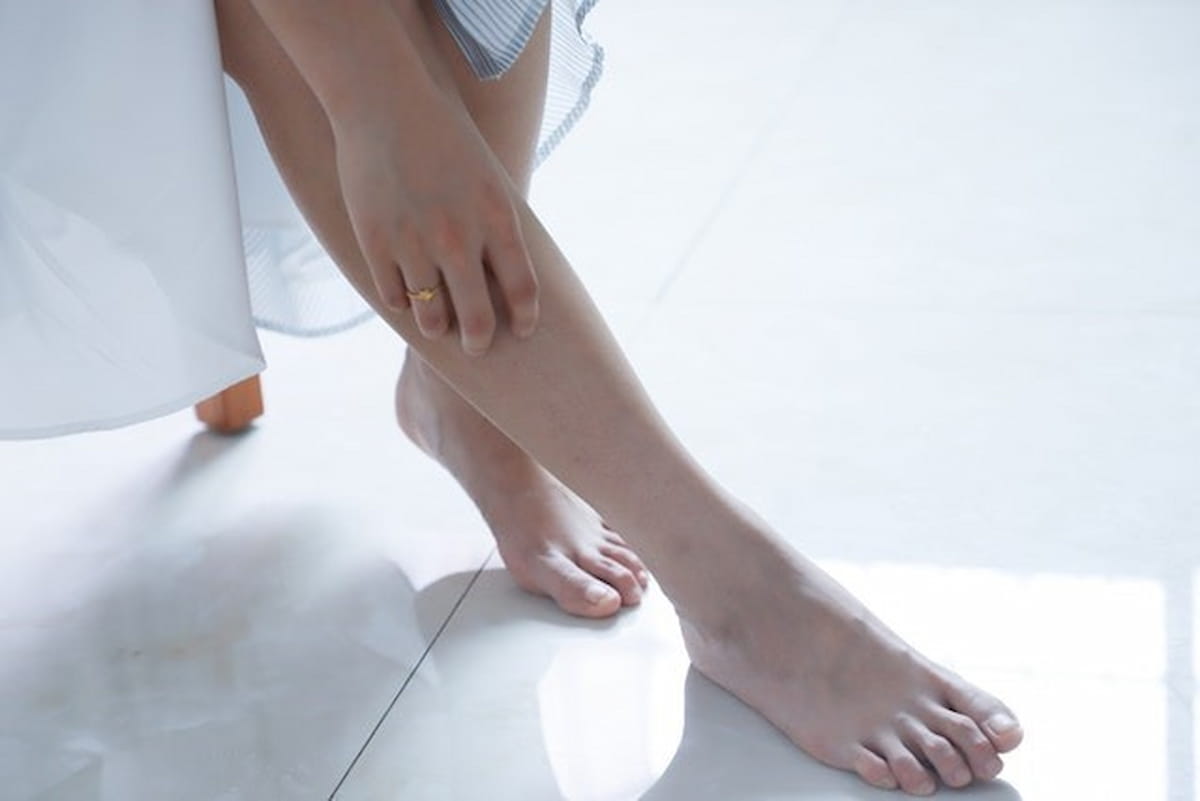Our feet are probably the part of the body that is most stressed, as they carry all our weight and support us throughout the day. But what can the health of our feet tell us about the overall health of the body? Here are some common foot problems and what may be their underlying causes:
1. Cold feet
If your feet are constantly cold, it can be the result of poor blood circulation. Poor circulation is often associated with smoking, high blood pressure, or heart problems. Nerve damage from diabetes can also cause a cold feeling in the legs. Other possible causes are hypothyroidism and anemia. Consult your doctor to identify any underlying problems.
2. Pain in the feet
When you feel pain in your feet after a hard day, you will probably put the blame on your shoes. However, the pain that is not caused by high heels may be due to a strain fracture, i.e., a small crack in a bone. Possible causes: strenuous exercise, high-vibration sports (such as basketball), and long-distance running. Bone weakening due to osteoporosis increases the risk of such injuries.
3. White, red, and blue toes
If you have Raynard syndrome, you may notice your fingers change color from normal to white, then to blue, to red, and back to normal. This is due to the sudden narrowing of the arteries, a condition called angiospasm. Stress or changes in temperature can trigger these vasospasms, which usually do not lead to other health problems. This syndrome can also be associated with rheumatoid arthritis, Sjögren’s syndrome or thyroid problems.
4. Heel pain
The most common cause of heel pain is planta faciitis, an inflammation of the plantar tissue. The pain can be more intense when you wake up, and while you get up, you put pressure on the heel bone. Other causes can be arthritis, strenuous exercise, shoes that do not fit well, and tendonitis. Rare causes include osteophytes in the lower leg, inflammation, fractures, or tumors in the bone.
5. Feet dragging
Sometimes the first sign of a problem is a change in the way we walk—a wider gait or a slight crawling of the legs. The cause may be the slow loss of normal sensation in the legs caused by some peripheral nerve damage. About 30% of these cases are associated with diabetes. Nerve damage can also be due to an infection, a vitamin deficiency, or alcoholism. In many cases, no one knows what caused the damage.

6. Clubbed toes
With clubbed toes, the shape of the toes (and often the fingers) changes. The nails are rounder at the top and curved downward. The most common cause of this condition is lung disease,although it can also be caused by heart disease, liver and digestive disorders, or certain infections. Sometimes it occurs within the family without any underlying disease.
7. Swollen feet
This is usually a temporary discomfort caused by standing or staying still, as in the case of long flights, and especially in pregnant women. On the contrary, when the swelling of the feet does not subside, it may be a sign of a serious medical condition. Persistent swelling of the feet may be due to poor blood circulation, problems with the lymphatic system, or the presence of a blood clot. Other factors are kidney disorders or hypothyroidism. If you notice persistent swelling of your feet consult your doctor.
9. Burning in the legs
Burning sensations in the legs is common in diabetics with peripheral nerve damage. It can also be caused by Vitamin B deficiency, by the “athlete’s foot”, by chronic kidney disease, by poor circulation in the legs (peripheral arterial disease) or by hypothyroidism.
10. Wounds that do not heal
Ulcers on the legs that do not heal are a major warning sign of diabetes. Diabetes can affect the sensation of the feet, the circulation, and the normal healing of wounds, with the result that even a simple blister can cause a problem. These ulcers are also prone to infection. Diabetics should wash and dry their feet and check for sores daily. Slow healing of wounds in the legs can also be caused by poor circulation due to conditions such as peripheral arterial disease.
11. Pain in the big toe
Gout is the leading cause of sudden pain in the big toe that is usually accompanied by redness and swelling. Osteoarthritis is also one of the culprits behind this condition. If the joint is stiff, it may be due to stiffness of the big toe (hallux rigidus), a complication of arthritis in which a painful thorn develops in the bone. In the case of an athlete, the pain is most likely due to a sprain of the 1st metatarsophalangeal joint (turf toe), a condition caused by damage to the ligaments surrounding the joint.
12. Pain in the smaller toes
If you feel like you are walking on something hard or your pain is burning in the front of your foot and is reflected in your toes, you may be suffering from Morton’s neuroma, a thickening of the tissue around the nerve usually located between the third and fourth toe. It is eight to ten times more common in women and is due to injury or excessive pressure on the fingers.
13. Itching
Itchy feet can be due to “athlete’s foot”, a fungal infection that is very common, mainly in men aged 20–40 years. It can also be due to dermatitis, i.e., a reaction to a chemical or care product, and may be accompanied by redness or the appearance of dry areas. If the skin in the itchy area is thick and looks like it has rashes, it may be psoriasis due to an overreaction of the immune system.
14. Leg spasms
A sudden, sharp pain in the leg is a sure sign of a muscle spasm or cramp that can last for several minutes. Physical exertion and muscle fatigue are the most common causes of its occurrence. Other causes include poor circulation, dehydration, and deficiency of various elements in the body such as Potassium, Magnesium, calcium, and Vitamin D. Hormonal changes that occur during pregnancy or when there are thyroid disorders, can also play a role. Strengthening exercises can help with the problem of muscle fatigue.

15. Mole on the sole
Most of us have a laid-back attitude when it comes to skin cancer. However, melanoma, the most dangerous skin cancer, occurs mainly in areas that are not exposed to the sun, such as the soles of the feet. In fact, it is very important to check the moles that are on the soles, as they are easily injured and are very dangerous to cause a problem. Melanoma can appear even under the nail, where it can look like a black mark.
16. Yellow nails
Toenails can tell us a lot about our health. A fungal infection often leads to thickening and yellowing of the toenails. Thick, yellow nails can also be a sign of an underlying disease such as lymphedema (swelling associated with the lymphatic system), lung disease, or rheumatoid arthritis.
17. White Nails
An injury to the nail or the presence of disease somewhere in the body can cause white areas to appear on the nails. If the nail or part of it is separated from its base due to an injury, infection, or psoriasis, the nail may look white. If the nail is intact but most of it is white, it may be a sign of a more serious condition such as liver disease, congestive heart failure, or diabetes. Talk to your doctor about any concerns.
18. Cracks in the nails
Cracks on the surface of the nail result from the reorganization of the normal growth of the nail. This abnormality on the surface of the nails occurs in almost half of people suffering from psoriasis.


















